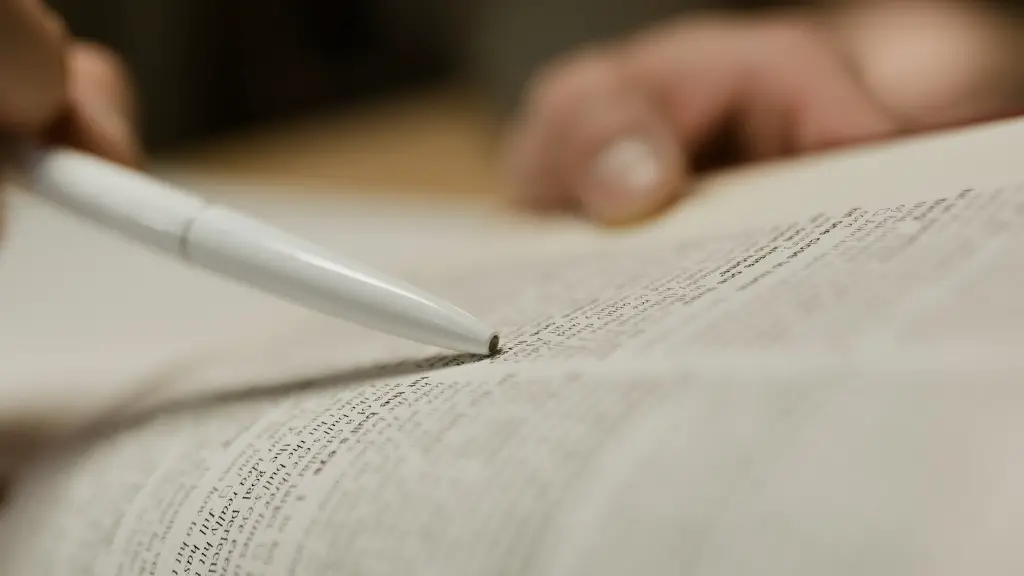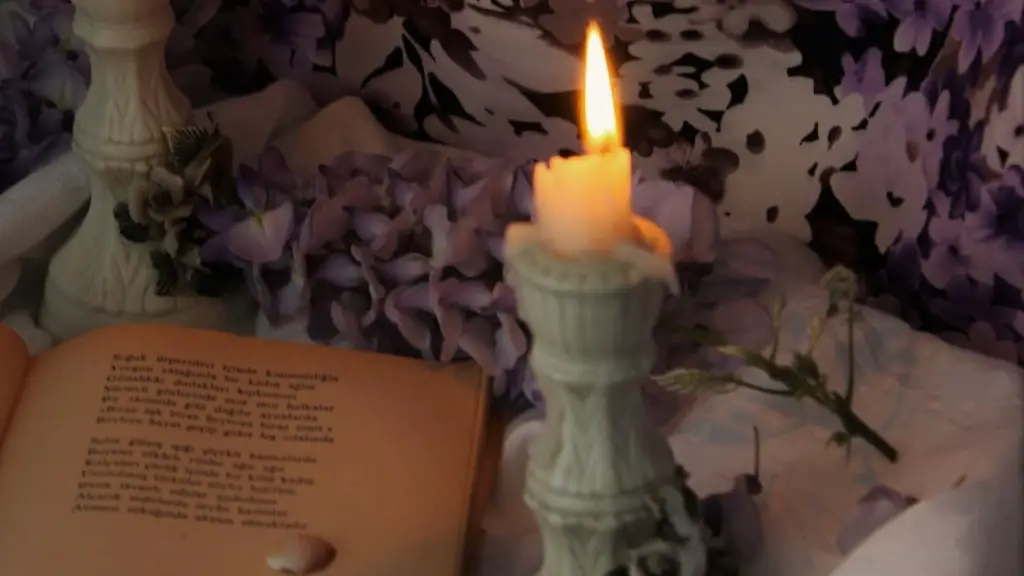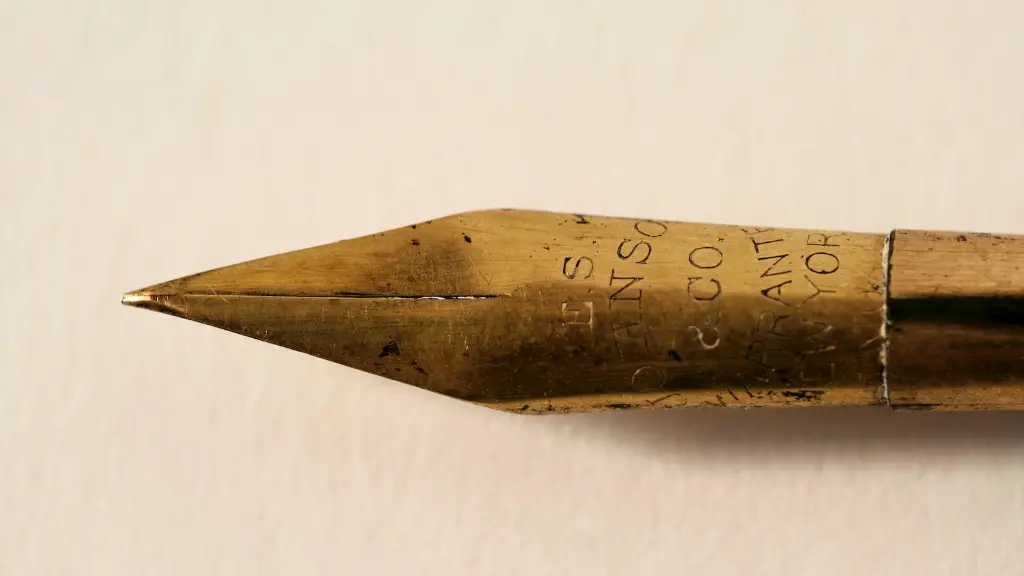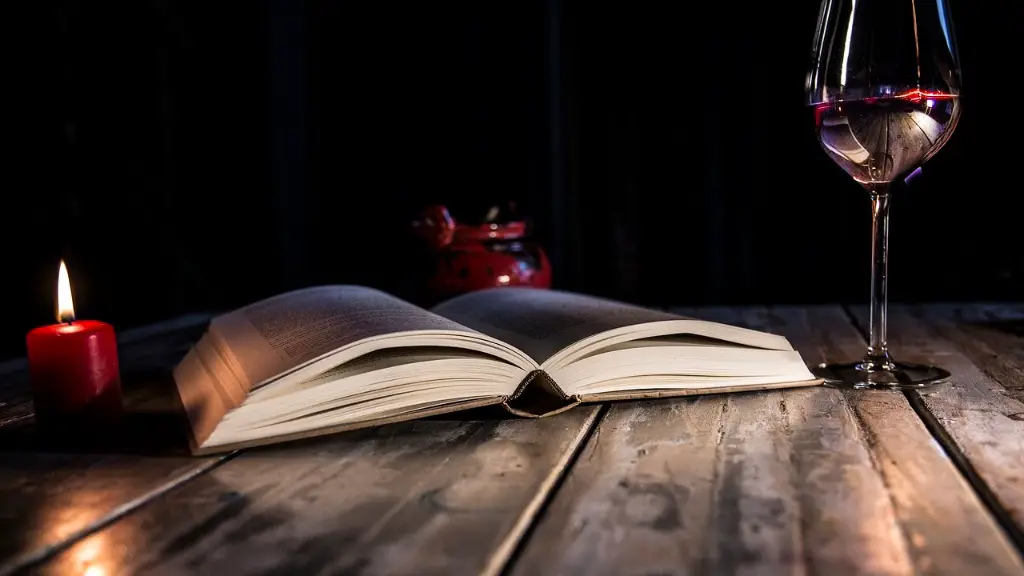As literature is an umbrella term to classify all types of writing, it is interesting to explore the differences of various genres, such as poetry and other types of literature. Poetry can be defined as a form of writing that communicates and expresses feelings, emotions, and ideas in an imaginative, musical, and creative way. It is a vast and ancient form of literature that requires the poet to express inner or personal feelings in an accessible and concise way. Poetry has been around as long as written language and many argue that it is the most personal and emotionally engaging form of writing.
Poetry uses language differently to other genres of literature, and in general has a much higher level of detail than other genres. In poetry, writers often use similes, metaphors, and other figures of speech to convey their meaning in a single line, rather than having to write several sentences to express one concept. In most cases, the primary focus of a poem is to evoke emotions in the reader before conveying its meaning. Poetry is usually condensed and direct, often using the rhythm and rhyme to keep the reader focused and connected to the poem.
One major difference between poetry and other forms of writing is the structure. In other literary genres, the structure is often used to help convey a narrative or plot. For example, a novel will have chapters and sections, which help to guide the reader and build the story. In contrast, poetry is often written in free verse or traditional forms, such as sonnets or haikus. The structure helps the reader understand the purpose of the poem, and can be used to convey meaning or emotion.
In terms of its content, poetry is often distinguished by its more imaginative and creative approach. The structure and language used are usually much more symbolic and metaphorical than other forms of literature. The focus is on conveying subtle emotions and meanings in an abstract manner, rather than simply describing an event or action. By using similes and metaphors, poets are able to give the reader a deeper understanding of the themes and messages behind the poem.
The language used in poetry is also much more flexible and open to interpretation than in other forms of literature. Poetry is often written without the use of strict grammar, which allows the reader to interpret and draw meaning from the text in a more personal way. By avoiding formal, conventional language, poets are able to communicate more directly and emotionally with the reader.
Lastly, poetry is often used to express deeply personal feelings and emotions. While other forms of literature, such as novels and short stories, can do this as well, there is something about the style of poetry that allows for the writer to be more expressive and honest with their feelings. As the structure of poetry is often more condensed than other forms of literature, the emotion is expressed more succinctly. This gives the reader a strong emotional connection to the poem and its message.
Metaphors
Metaphors are a powerful tool and often used in poetry to convey meaning in a more abstract and creative manner. Metaphors can be used to denote one thing while symbolizing something else. For example, the poet may refer to the night sky as a blanket of stars, suggesting that it is an expansive, comforting embrace. In other forms of literature, metaphors are usually more subtle and are used to add layers of meaning or to evoke certain emotions. However, in poetry, the metaphors often take center stage, allowing the reader to draw their own meaning and interpretations.
The use of metaphors in poetry allows for a greater degree of depth and complexity. The metaphors provide the reader with an opportunity to think more deeply about the poem, as the metaphors often contain deeper meanings and implications. Metaphors also serve to make the poem more engaging, as it requires the reader to think beyond the literal interpretations of the words.
Rhyme and Structure
Rhyme and structure are essential components of poetry. Rhyme is often used to give the poem a musical quality and aid in creating a deeper emotional connection with the reader. It can also be used to emphasize certain points or ideas, and to make the poem more memorable. Rhyme also gives the poem a more lighthearted and playful tone, as it makes the poem more enjoyable to listen to and read.
If the poem is written in a traditional structure, it can be used to convey a particular message or theme. For example, the sonnet is often used to tell a story, or to express a particular sentiment. The structure serves to focus the reader’s attention and to direct their interpretation of the poem. By using a specific structure, the poet is able to express their ideas in a more organized and coherent way.
Imagery
The use of imagery is an essential part of poetry, as it allows the poet to convey their ideas in a more imaginative and engaging manner. Imagery can be used to bring the reader into the poem and create an emotional connection. The poet can use vivid images to paint a vivid picture in the reader’s mind, enabling them to better understand the poem’s message. Imagery can also be used to invoke a certain emotion or to convey a deeper meaning that might otherwise be difficult to express.
By using imagery, the poet is able to express the themes of the poem in a more creative and engaging manner. For example, a poet might use the imagery of a storm to depict feelings of turmoil or unrest, or a beautiful garden to convey feelings of peace and tranquility. Imagery allows the poet to use symbolic language to convey their meaning, creating a more vivid and engaging experience for the reader.
Voice
Another distinguishing factor of poetry is the voice of the poet. In other literary genres, the voice of the author is usually quite formal and detached. However, in poetry, the poet’s voice is often more direct and emotional than in other forms of literature. By directly expressing their emotions and ideas, the poet is able to create a much deeper and more meaningful connection with the reader.
The poet’s voice is also often more individual and subjective than in other forms of literature. Whereas in a novel or a play, the author’s voice is usually quite impersonal and objective, the poet’s voice is often more personal and reflective. By expressing their own feelings and opinions, the poet is able to give the reader a unique and intimate insight into their thoughts and feelings.
Figurative Language
Figurative language is another key component of poetry which distinguishes it from other literary genres. This includes languages such as similes, metaphors, hyperbole, and personification. By using figurative language, poets are able to depict concepts in a more vivid and emotional fashion. The use of figurative language allows the poet to convey their message while also adding an extra layer of meaning.
Using figurative language also allows the poet to tell their story in a more creative and imaginative way. By using similes and metaphors, the poet is able to convey more subtle and complex meanings, and to make their poem more engaging for the reader. By using vivid and expressive language, the poet is able to more effectively communicate their message and evoke certain emotions in the reader.
Symbolism
Symbolism is another important element of poetry that sets it aside from other literary genres. The poet often uses symbols, often in the form of imagery, to convey particular ideas and themes. By using symbols, the poet is able to evoke certain feelings and emotions in the reader. This makes the poem more emotionally engaging, as the symbol can evoke a deeper meaning than the literal interpretation of the words. As well as being used to evoke particular emotions, symbols can also be used to convey a deeper, more abstract meaning which can be interpreted differently by each reader.
Symbolism also allows for a greater degree of creativity in the poem. By using symbols, the poet is able to communicate ideas in a more imaginative and creative way. This can make the poem more interesting and engaging for the reader, as they are able to draw different meanings and interpretations from the symbol. The poet is also able to make the poem more meaningful, as the symbols can be used to convey a certain message or theme.




